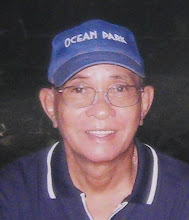L. AMUSEMENTS IN ALFONSO
1. HARANA (SERENADING)
It is very old form of amusement introduced by Godofredo Canlobo from Batangas during the late 1800’s and was adopted by the local bachelors. At night, they gather at a certaion meeting place carrying a guitar. They go around singing kundimans.
Then the group will choose a girl’s house and there, sing their best songs until the family of the girl is awakened who, in turn, invites the sernaders to come in. They chat, play and sing together, at times, ‘till late, late at night’.
During the mid-60s and innovation was introduced. The practice was used in welcoming lady visitors. Occassionally, due to peer or gang competition and jealousy, misundertandings occurred among different groups of manghaharana (serenaders). During the Second World War, the practice became so common that troubles became rampant. After the war, it was temporarily prohibited but later, was revived and activated by the modern generation with multiple variations.
According to Olimpio Ortega, when Godofredo Canlobo introduced harana, he was with is friend named Serafin. They both came from Talisay, Batangas. The reason for their frequent visits to Alfonso was to see Filomena Aviñante (Menang), the pretty daughter of Francisco Aviñante II (IKYONG) and Eusebia Rosanes.
Inspired by Godofredo and Serafin were Esteban Crizaldo, Apolonio Escano, Pablo Rom. Olimpio Ortega, Ignacio Varias and Hermogenes Eroles.
On the otherhand, Anastacio Añonuevo (Tasyong Taba) believed that the Harana pioneers were Pedro Pillerva and Pablo Rom.
Anastacio, later became a member of the ALULONG, together with Ireneo Alano, Juan Aviñante, Olimpio Ortega and Pablo Gloriani.
2. SABONG (COCKFIGHTING)
Like anywhere else in the Philippines, Sabong is also a favorite pastime in Alfonso. I read that sabong has been practiced in the Philippines since the time of Magellan. It is an interesting form of amusement but one could be deeply involved in it. Some businessmen had gone bankrupt due to this gambling habit. Sabong was legalized already but some still insist on doing the illegal tupada.
3. SIPA (Local Football):
It is a kind of ballgame played by the feet and is more commonly played in the Barrios than in the Poblacion. The ball is made of woven bamboo strips. It could be palyed by twos or by teams; the best kicker is of course, the winner. It used to be a very interesting betting game during Barrio Fiestas but with the advent of new ball games, sipa lost its popularity. Very few among the youth today have seen the game.
There are other interesting games in Alfonso, such as hagarang taguan, tumbang preso, tibigan and others.
I can still recall those days when we used to catch kuru-kuruk, hiding backwards through dust mounds; kiskis-kiskisan (toy rice mill), using salagubang, and also gula-gulaman using pakinoy.
We used to gather sapinit (wild berry), among abandoned fences. We made sumpit (toy wind gun) out of usiw and anos from the brooksides. We used tagpo as bullets. We also gathered irok, days before the Fiesta. We made bantay to catch the bird pakiskisi during harvest season; parukot and pakwis to catch monkeys and alamid (wild cat), as well as musang. We caught yayay and kagang using the sticky jackfruit sap (dagta).
Ah, those days when teen-agers palyed bahay-bahayan and took a bath nude at the brook without a tint of malice.
The technological age has corrupted everybody with the ataris, betamax, video, CDs, the computer, and other mechanical devices that entertain the passive viewer.
From the book TINGKORAW: Alfonso's History and Legend by jett e. avinante, m.d.
Subscribe to:
Post Comments (Atom)

No comments:
Post a Comment